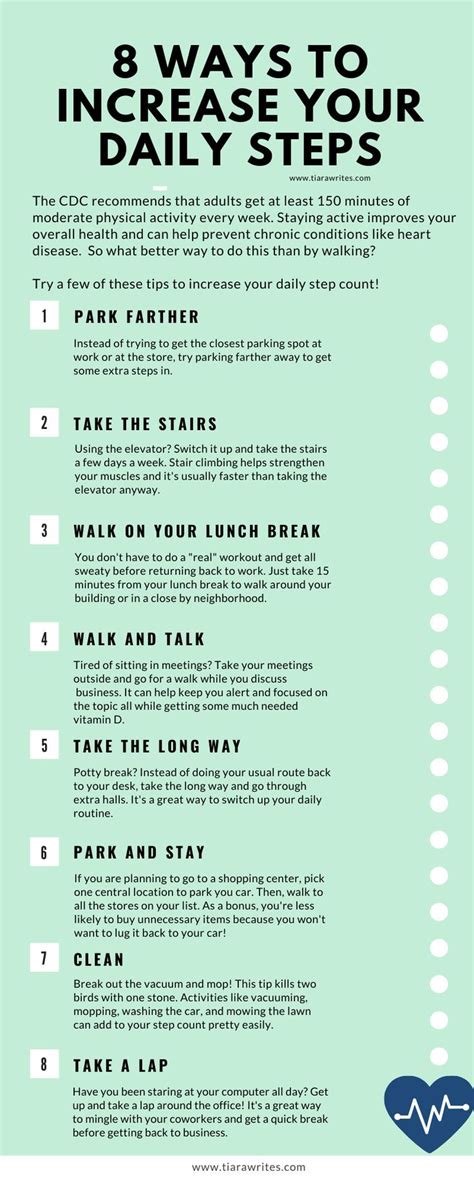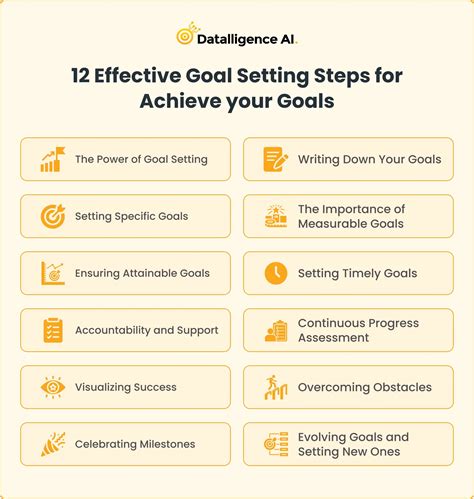Intro
Discover the ideal daily step count for a healthy lifestyle, exploring benefits of regular walking, step tracking, and fitness goals, to boost overall wellbeing and reach optimal physical activity levels.
The importance of physical activity in our daily lives cannot be overstated. With the rise of sedentary lifestyles, many of us are not getting enough movement, which can lead to a range of health problems. One simple and effective way to increase our physical activity is by taking a certain number of steps each day. But how many steps should we be aiming for? In this article, we will explore the benefits of taking a daily step goal, the science behind it, and provide practical tips on how to achieve it.
Regular physical activity has numerous benefits for our overall health and wellbeing. It can help to reduce the risk of chronic diseases, such as heart disease, diabetes, and some types of cancer. Physical activity can also improve our mental health, boost our mood, and increase our energy levels. With so many benefits, it's no wonder that health professionals and fitness experts are always encouraging us to move more. One way to do this is by setting a daily step goal, which can be a fun and achievable way to increase our physical activity.
The concept of taking a certain number of steps each day is not new. In fact, it has been around for decades. The idea is simple: by taking a certain number of steps each day, we can increase our physical activity, improve our health, and reduce our risk of chronic diseases. But how many steps should we be aiming for? The answer to this question is not straightforward, as it depends on various factors, such as our age, fitness level, and health status. However, there are some general guidelines that we can follow.
Benefits of Daily Step Goal

Taking a daily step goal can have numerous benefits for our health and wellbeing. Some of the benefits include:
- Improved cardiovascular health
- Increased energy levels
- Weight loss
- Improved mental health
- Reduced risk of chronic diseases
To achieve these benefits, it's essential to set a realistic and achievable daily step goal. This can be done by using a pedometer or a fitness tracker, which can track our steps and provide us with feedback on our progress.
How to Set a Daily Step Goal
Setting a daily step goal is easy and straightforward. Here are some steps to follow: * Start by tracking your current daily step count using a pedometer or a fitness tracker * Set a realistic and achievable daily step goal based on your current fitness level and health status * Increase your daily step goal gradually over time to avoid injury or burnout * Make sure to track your progress and adjust your daily step goal as neededScience Behind Daily Step Goal

The science behind daily step goal is based on the idea that regular physical activity can improve our health and reduce our risk of chronic diseases. Studies have shown that taking at least 10,000 steps per day can have numerous health benefits, including improved cardiovascular health, increased energy levels, and weight loss.
But how does it work? When we take a certain number of steps each day, we are increasing our physical activity, which can help to improve our cardiovascular health. Regular physical activity can also help to increase our energy levels, which can improve our overall wellbeing. Additionally, taking a daily step goal can help to reduce our risk of chronic diseases, such as heart disease, diabetes, and some types of cancer.
Factors That Affect Daily Step Goal
There are several factors that can affect our daily step goal, including: * Age: Older adults may need to take fewer steps per day due to reduced mobility or health status * Fitness level: Fitter individuals may need to take more steps per day to challenge themselves and improve their health * Health status: Individuals with certain health conditions, such as diabetes or heart disease, may need to take fewer steps per day due to reduced mobility or health statusPractical Tips to Achieve Daily Step Goal

Achieving a daily step goal can be challenging, but there are several practical tips that can help. Here are some tips to follow:
- Start small: Begin with a realistic and achievable daily step goal and gradually increase it over time
- Make it a habit: Incorporate physical activity into your daily routine, such as taking a walk during your lunch break or after dinner
- Find an activity you enjoy: Engage in physical activities that you enjoy, such as walking, running, or swimming
- Get support: Share your daily step goal with a friend or family member and ask for their support and encouragement
Common Mistakes to Avoid
There are several common mistakes that people make when trying to achieve a daily step goal. Here are some mistakes to avoid: * Setting an unrealistic goal: Setting a daily step goal that is too high can lead to injury or burnout * Not tracking progress: Failing to track progress can make it difficult to stay motivated and achieve the daily step goal * Not making it a habit: Failing to incorporate physical activity into your daily routine can make it difficult to achieve the daily step goalConclusion and Next Steps

In conclusion, taking a daily step goal can have numerous benefits for our health and wellbeing. By setting a realistic and achievable daily step goal, incorporating physical activity into our daily routine, and tracking our progress, we can improve our cardiovascular health, increase our energy levels, and reduce our risk of chronic diseases. Remember to start small, make it a habit, and find an activity you enjoy. With persistence and dedication, we can achieve our daily step goal and improve our overall health and wellbeing.
We encourage you to share your experiences and tips on achieving a daily step goal in the comments section below. You can also share this article with your friends and family members who may be interested in improving their health and wellbeing. By working together, we can achieve our health goals and live a healthier and happier life.
What is the recommended daily step goal?
+The recommended daily step goal is at least 10,000 steps per day, but this can vary depending on age, fitness level, and health status.
How can I track my daily step goal?
+You can track your daily step goal using a pedometer or a fitness tracker, which can provide you with feedback on your progress.
What are the benefits of achieving a daily step goal?
+Achieving a daily step goal can have numerous benefits, including improved cardiovascular health, increased energy levels, and reduced risk of chronic diseases.
How can I make physical activity a habit?
+You can make physical activity a habit by incorporating it into your daily routine, such as taking a walk during your lunch break or after dinner.
What are some common mistakes to avoid when trying to achieve a daily step goal?
+Some common mistakes to avoid include setting an unrealistic goal, not tracking progress, and not making physical activity a habit.
